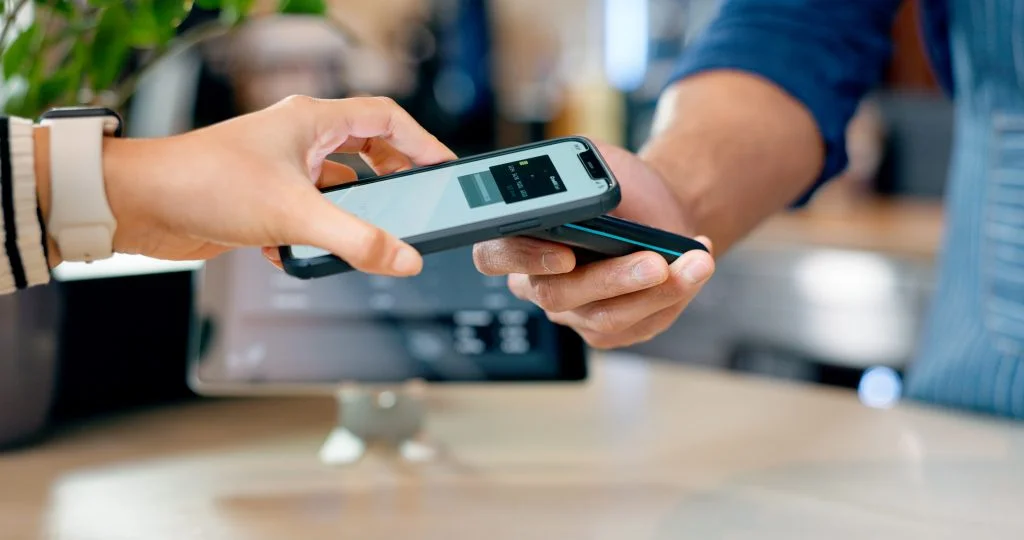What is interoperability in payments?
Interoperability in payments means that payments from different rails and sources—such as cards, account-to-account transfers (domestic and cross-border), and digital wallets—can communicate transfer funds between each other.
It’s fueled by consumer demand for simplicity and business demand for efficiency. Customers can transfer currency using any form of payment facilitator, at any time, anywhere in the world. With a global, interoperable network, global banking will become truly instant and endlessly fluid.

Interoperability in Payments
How it works
Converging systems, working seamlessly together.
Account-to-Account (A2A)
Customers save on costly interchange fees by transferring funds directly from one account to another.
Open Banking
A key enabler, Open Banking allows third-parties to seamlessly initiate payments, share and consolidate data in real-time across multiple accounts and rails.
Request to Pay (RtP)
RtP enables transactions by giving the payee the chance to initiate a payment request (e.g. sending a QR code). This can be done instantly, in installments, or via deferred payment.
Payment Rails
Payment rails, which include cards and account-to-account (instant payments, batch payments, RTGS, Cross-Border) can interact and integrate to settle transactions more efficiently.
The future of payments
How do we achieve interoperability?
Enable inter-network transactions
Customers should be able to send money seamlessly and instantly across different banking networks and channels. This means everything from card transactions, to account-to-account transfers and mobile wallets must be inter-connected to enable instant payments.
Global connectivity
Banks and PSPs worldwide should be able to send and receive funds instantly across borders. Currency conversions, fraud prevention and regulatory clearance must all happen in real time, and without the need for human intervention.
Seamless technology
Interoperability ensures that customers can enjoy instant transactions without delay, powered by next-generation technologies communicating seamlessly with one another. This communication must be in line with ISO 20022, and adhere to global security standards.
Total experience
For the end user, the experience must appear instant and fully secure. All necessary checks must be accomplished in the background – this could include checking transactions against sanction lists, performing Confirmation of Payee in real time, and also handling refunds where necessary.
Case study
The rise of UPI in India
Launched by the National Payment Council of India in 2016, UPI (United Payments Interface) is considered one of the world’s leading instant payment schemes.
UPI QR code-based payments function across multiple payment schemes, making it a powerful enabler for a domestic Indian – and increasingly global – interoperable payments system.
It shows no sign of slowing down, charting unprecedented month-on-month growth. Now, it’s forging links across borders.
14 billion
Monthly transactions as of May 2024 456 billion
350 million
Active UPI users as of September 2024
456 billion
Predicted transaction volume by 2028
The scale of the opportunity
Make no mistake: Interoperability will become a key driver of a global standard of payments infrastructure change.
A trend that underpins everything from Open Banking to Instant Payments, Interoperability will redefine the way customers send and receive money worldwide.
The momentum has already started, with Singapore and India leading the way, and Europe, LATAM and Asia not far behind. But there is still a long road ahead.
By 2030
Account-to-account (A2A) payments could overtake card transactions across many key global markets.
Get support
Key challenges for banks
Developing an interoperable system or migrating your existing banking infrastructure to a new system will require time and expertise that you may not have readily available.
Technological integrations
With many banks operating on legacy systems, upgrading to become fully interoperable may require extensive technical support.
Regulatory compliance
Can your bank adapt to an interoperable world while remaining compliant across multiple geographies? You may need to adapt new standards for security, leading to additional costs and operational burdens.
Fraud prevention and cybersecurity
New payment models create new opportunities for fraud. Can your organisation stay one step ahead of potential vulnerabilities and protect customers?
Global payments experts
Why choose RedCompass Labs?
We’ve helped some of the biggest banks on the planet embrace the future of payments.
22+
years in payments modernisation
24
countries
200+
years combine banking experience
300+
successful projects






